The History Of The Triumph Classic Cars with Triumph Super 8 & Super Eights cars models (Triumph Cars Models)

picture Of
Triumph Super 8 Classic Cars
The name was changed in 1933 to the Super 8, the car had always technically fallen into the 8 hp taxation bracket, and all cars gained the Mk II chassis. The body range was further reduced to the two door saloon, pillarless saloon and four seat tourer. This was the last year for the car. Triumph had already launched the Super 9 in 1931 and this car was destined to be the replacement.

picture Of
Triumph Super 8 Classic Cars
In essence the Super Eight was a rebadged Super Seven with the addition of Magna wheels, the option of a 4-speed gearbox and bumpers fitted as standard. They can also be identified from Super Sevens by their wire mesh radiator grille and 'ribbon' style surround with a central vertical chrome strip. We estimate that just under 2,500 Super Eights were produced. We have recorded 41 with 24 surviving of which 14 retain their original style bodywork. 2 body styles were available;
Labels: Triumph, Triumph Classic Cars, Triumph Motor Company, Triumph Super 8
The History Of The Triumph Classic Cars with Triumph Super 7 & Super Seven cars models (Triumph Cars Models)
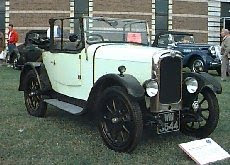
picture Of
Triumph Super 7 Saloon Classic Cars
Body Styles
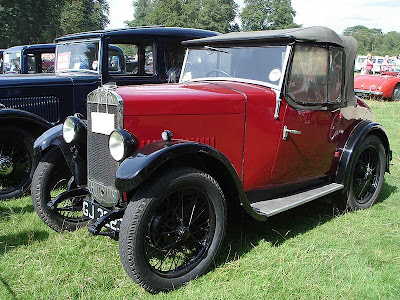
picture Of
Triumph Super 7 Saloon Classic Cars
A range of body styles were available, all made in house. The cheapest model was a two-door four seat tourer, followed by a de-luxe tourer with two coloured body, a two-seater with dickey seat, a two-door saloon, a fabric bodied saloon and at the top of the range, a coachbuilt saloon. Gordon England could also supply a special fabric bodied saloon with sliding roof. The chassis was also supplied to other coachbuilders for fitting their own bodies. Prices ranged from £113 for the chassis to £190 for the Gordon England saloon. On test the car could reach just over 50 mph (80 km/h) and return 40 miles per imperial gallon (7.1 L/100 km; 33 mpg).
Model History

picture Of
Triumph Super 7 Saloon Classic Cars
For 1929 a new body style was released called the Special Sports with pointed tail and there was also briefly a supercharged version with the engine capacity reduced to 747 cc and reputedly able to reach 80 mph (130 km/h) but they were expensive at £250 and few seem to have been sold. Also in 1929 Donald Healey entered a standard car in the Monte Carlo Rally, starting from Berlin but failing to finish, getting stuck repeatedly in the snow in France. Undetered he tried again in 1930 and was the first British car to finish and seventh overall, an amazing result in a car with a top speed of 50 mph (80 km/h).

picture Of
Triumph Super 7 Saloon Classic Cars
Even more body styles appeared in 1930 when a two-seat coupé, a de-luxe fabric saloon and amazingly, a landaulet appeared. Wire wheels became standard replacing the artillery type that had been used on some versions. The extensive range was simplified for 1931 with the deletion of the fabric saloons, landaulet, coupé and Special Sport but a Gnat sports tourer and Tickford bodied saloon were added.

picture Of
Triumph Super 7 Saloon Classic Cars
With the deteriorating economic climate a further rationalisation of the range was carried out in 1932 with the cars being designated Mark I for the tourers and Mark II for the saloons. A pillarless saloon joined the range. The car's track grew from 42 to 43.5 inches (1105 mm), the rear springs were changed from quarter to semi elliptic on the Mk II Saloons and the de-luxe models got a four speed gearbox.
Labels: Triumph, Triumph Classic Cars, Triumph Motor Company, Triumph Super 7
The History Of The Triumph Classic Cars with Triumph Super 7 & Super Seven cars models (Triumph Cars Models)
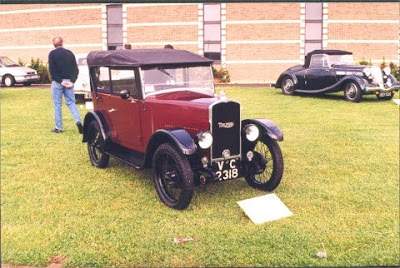
picture Of
Triumph Super 7 Saloon Classic Cars
The Triumph Super 7 was a car manufactured from 1927 to 1934 by the Triumph Motor Company. It was produced as a response to the success of the Austin 7 and was Triumph's first car to be made in large numbers. In 1933 the name was changed to the Triumph Super 8.
Design

picture Of
Triumph Super 7 Saloon Classic Cars
Development of the new car had started in 1925 when Arthur Sykes, who had been with Lea-Francis was given responsibility to design a new small car. Amongst those he recruited to help him was Stanley Edge, who had been the original draughtsman for the Austin 7. The car was launched in September 1927 and was 6 inches (150 mm) longer and 2 inches (50 mm) wider than the Austin. The new 832 cc 4 cylinder side valve engine, mainly designed by Harry Ricardo, had a stroke of 83 mm (3.3 in) and bore of 56.5 mm (2.2 in) and unlike the Austin had a three bearing crankshaft with pressure lubrication and monobloc crankcase made from cast iron. (The Austin 7 had a two-bearing crankshaft and the cylinder block and crankase were separate castings.) The car followed its Triumph predecessors by having Lockheed hydraulic brakes, but now they were internal expanding in 9.5 in (241.3 mm) drums and so less affected by water then the older external contracting type. The handbrake operated on the transmission.
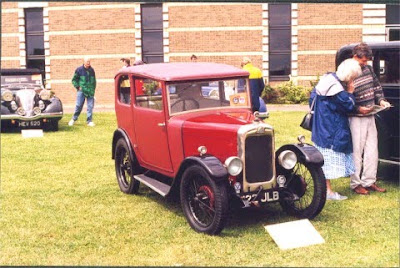
picture Of
Triumph Super 7 Saloon Classic Cars
The chassis had a rigid front axle supported by half elliptic springs and a live rear axle with Austin 7-like quarter elliptics allowing the chassis side members to finish ahead of the rear axle. The three speed non-synchromesh gearbox was mounted in unit with the engine and transmitted power to the worm gear final drive via a torque tube. The electrical system was 6 volts.
Labels: Triumph, Triumph Classic Cars, Triumph Motor Company, Triumph Super 7
What does the oil spill and a discussion on a "boycott" of BP have in common with an insurance agent's blog? Not much... But, I wanted to put my two cents in because the "boycott BP!!!" fad is really picking up steam.
The explosion of BP's Deepwater Horizon oil rig in the Gulf of Mexico on April 20th of 2010 quite possibly could have been prevented. The reaction of BP and decisions made on how to stop the flow of oil 5,000 feet below the water's surface could have been more timely and effective (it's still gushing). The federal government's response... well, I won't go there,
This is a tragedy.
- 11 people lost their lives.
- Hundreds of workers and their families will live with the memory of that tragic and frightening day for many years.
- Thousands of local businesses will be detrimentally impacted by the effects of the spill reaching the coasts of Alabama, Mississippi, Florida, Louisiana, and beyond.
- The environment now has to recover. It will recover. Disasters happen all of the time naturally all of the world and the earth is still here. (wait, let's not go here)
- The list can go on. We don't even know the full effects of what is to come.
Oil is still flowing.
I own a small insurance agency in the state of Alabama. Oil reached our shores last week. Twitter, Facebook, the Blogosphere, and websites are going crazy about the idea of boycotting "BP." Well, the main way to boycott the company is perceived as not patronizing their 11,500 gas stations in the U.S. Yes, BP attributes most of it's profits from the sale of gasoline and oil based products. But, who owns the gas stations?
BP Gas Stations are owned by individuals. The average station owner has 1 location. They make a very small profit - just a few pennies - off of every gallon of gasoline that is sold. They make their total profit on the items that are sold inside the store (snacks, drinks, food, tobacco, etc). I know several gas station owners in Shelby County, Alabama and my great grandfather started a wholesale business that supplied gas stations with goods for around 80 years... there are very tight margins in this business and it can be very hard to make a profit.
BP gas station owners had nothing to do with this tragic event. They are small business owners who live in our neighborhoods and depend on the sale of their products inside the store to make their living. If I boycott a BP gas station, I am boycotting a local business owner who did nothing wrong.
This is why I thought twice before boycotting BP gas stations. You can make your own decision. As a small business owner who can't always control things 'from the top' I hope that people want to do business with ME and help me provide for my family. We're about to drive 180 miles round trip for a birthday celebration for my grandmother. I'm going to stop at my local BP to fill up.
The History Of The Triumph Classic Cars with Triumph 15/50 cars models (Triumph Cars Models)
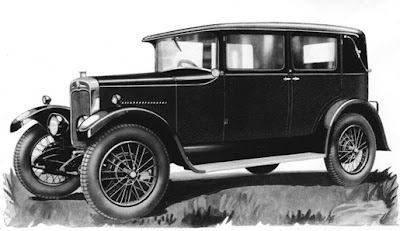 picture Of Triumph 15/50 Classic Cars
picture Of Triumph 15/50 Classic CarsFifteen - 1926 to 1930, 14.9 h.p. 2,169cc 4-cylinder side valve engine with 3-speed gearbox.
Built to the same dimensions as the 13/35, but with a larger capacity engine, the Fifteen was the last of larger conventional cars built by Triumph, before they concentrated on small and then sportier cars. We have recorded 11 and two survive with their original style bodywork. 5 body styles were available.
 picture Of Triumph 15/50 Classic Cars
picture Of Triumph 15/50 Classic Cars
The first owner, a Dr Watson of Cambridge ran the car from 1928 until 1934, when it was laid up. The present owner bought itafter Dr Watson’s death in August 1959, with 4,500 miles on the speedometer. It has since covered about 30,000 miles & the interior is entirely original. This was the first British car to be fitted with four wheel hydraulic brakes (Lockheed Wagner) imported with the axles from the USA. This model was the first Triumph marque to be exported seriously, mainly to Australia & New Zealand. Owner: Mike Cooke
Labels: Triumph, Triumph 15/50, Triumph Classic Cars
Maratona de ilustrações relacionadas a tatuagem. Oficina de desenhos artístico temático.
Serão quatro encontros aos sábados, das 14 as 18 Hs, no mês de junho, na CCMQ. Com o objeivo de realização prática de ilustrações relacionadas a Grafia de Tatuagens; Os quatro encontros terão teor principalmente prático, com abordagens teóricas específicas em cada encontro, bem como avaliaçao coletiva e exercícios de construção gráfica, atrelados a produção de cada participante, desenvolvendo matrizes para tatuagem artesanal.
A oficina não necessita de materiais especiais, a não ser papel e lápis B, trabalharemos sem tinta, aquarelado ou outras técnias que não o desenho a grafite seco.
Sob a orientação do Tatuador Profissional e Arte-pedagogo Vinícius Gueterres da Rocha, vamos compor Desenhos e Ilustrações relativas a arte da tatuagem, e também estabeleceremos uma postura crítica em relação a metodologia e resultado referente a estas obras gráficas, compreendendo melhor a iconografia, estilos, e influencias do desenho na tatuagem, bem como será identificado a presença da imagem da tattoo nas produções, visuais contemporâneas, Artes, Design, Cinema, Propaganda.
Atenção: A oficina abordará o desenho relacionado a tatuagem, mas não é um curso de tatuagem.
Contatos e reservas:
viniciusguterresdarocha@gmail.com
92929780 - 96798144 4Labels: Eventos e Cursos
Oi para todos vocês,
Meu nome é Maria e esta tatuagem foi feita à cerca de um mês e representa uma estrela celta. Representa as três faces da mulher: a anciã, a mãe e a virgem. Usado como talismã, esse objeto atrai as três principais qualidades femininas – ou seja, a intuição, a ternura e a beleza. É também um símbolo de graciosidade e movimento. Beijos.
MariaLabels: Estrela Celta, Minha Tattoo, Significados
 picture Of Triumph Super 8 Classic Cars
picture Of Triumph Super 8 Classic Cars